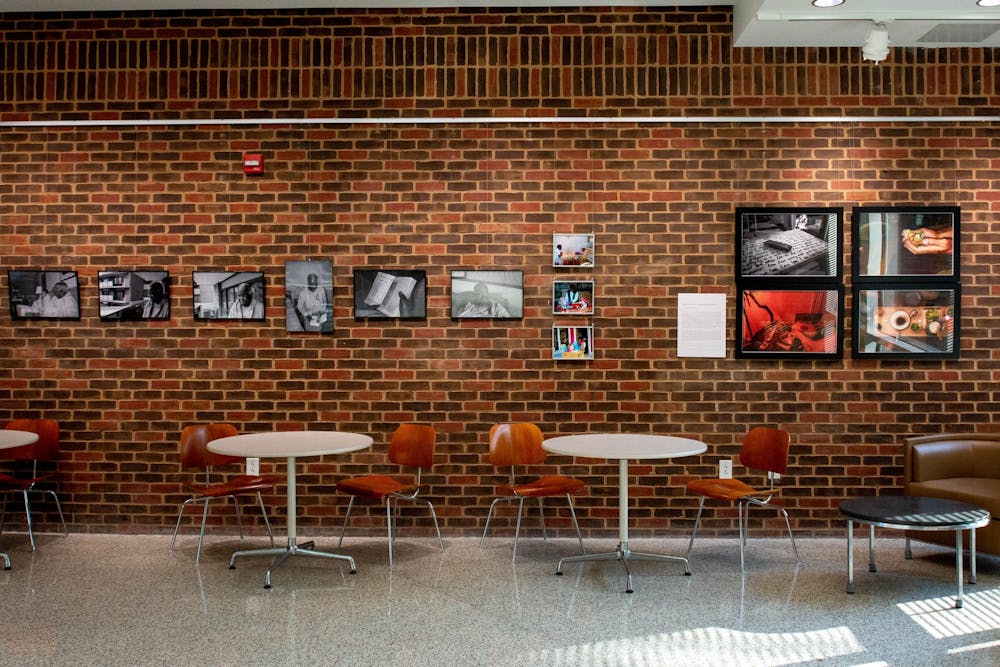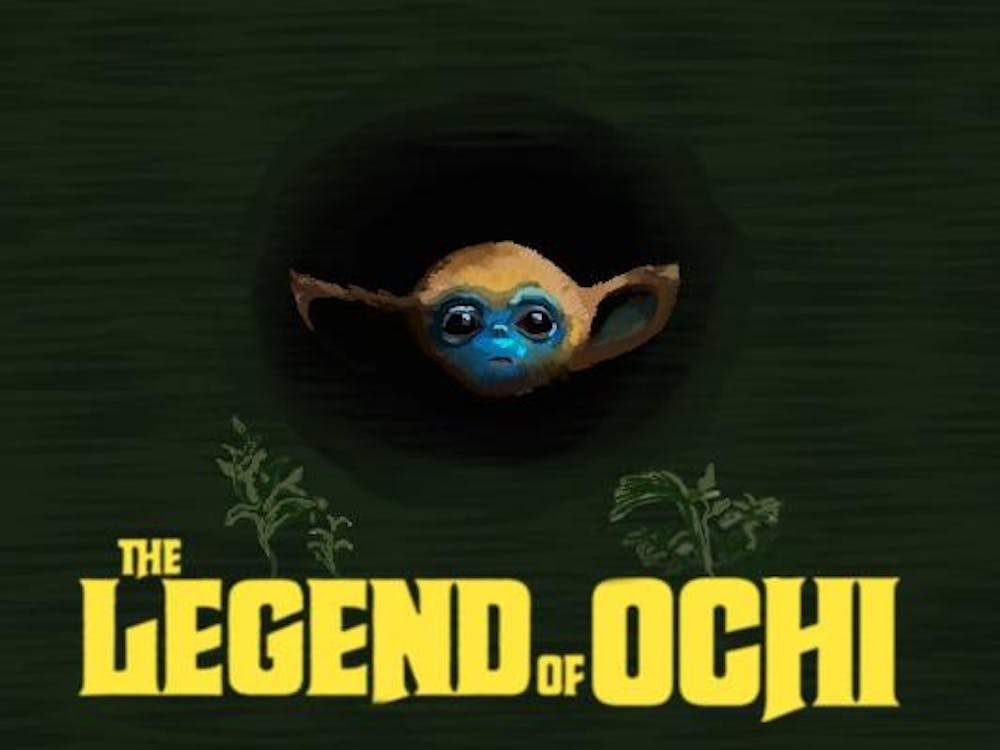Beginning on April 17 and running until the end of the semester, five students displayed collections of photographs as a part of a student workshop for the Frederic Brenner Residency at the University. These photos ranged in style from portraits to landscapes, but all gave an in-depth glimpse into each student’s thought process and life. Students were able to interact with the art and get a glimpse into what student artwork at the University is like because it is displayed publicly in Nau Commons.
Third-year College student Britney Cheung chose to represent her experience as an Asian American student at the University through her photographs titled “Main Characters in America.” Cheung’s photos featured her Asian American friends at the University in environments they encountered in their daily lives.
In her collection, Cheung particularly wanted to focus on how Asian culture is brought to the University community.
“Students don’t get a lot of access to Asian products in Charlottesville so they bring things, often food, from their home to college. These things are a source of comfort and sharing these items with their friends gives them an opportunity to connect and experience the warmth of home together,” Cheung said.
A picture depicting someone drawing henna on their arm demonstrates how Asian American students bring their own cultural practices to Grounds.
In her artist statement, Cheung talks about not only the joy, but also the discomfort that her Asian American friends face at the University.
“They find instances of comfort in being curious about the world … at the same time they face discomfort in rooms that render them invisible,” Cheung said.
Fourth-year Batten student Thien-Kim Dinh addressed the perception of how people view themselves and how others perceive them through her exhibit titled “Seeing the Unseen.”
With three striking photographs, she represented her subject, her friend Sam, in different moments using the double exposure method. This method speaks to the idea that individuals’ personalities and identities have multiple sides.
Similarly to Cheung, Dinh puts her subject, who is half-Iranian, in spaces that were historically occupied only by wealthy, white male students — Dinh emphasizes in her artist statement that she is trying to break up the whiteness of a space that was historically hostile to people of color.
For his exhibit titled “Giving Care to Grace,” fourth-year College student Ben Hazelton represented the relationship between Althea Frederick and Gracie Hazelton, a caregiver and a care-recipient. These images depict the everlasting bond that Althea and Gracie had even after Gracie’s death in 2012.
Within Hazelton’s touching pictures, Erich Hazelton — Gracie’s younger brother — and Frederick were prompted with questions intended to elicit memories of Hazelton after her death, Ben Hazelton states in his artist statement. In one of the pictures, Frederick shows her bible to Erich Hazelton after telling a story about his sister and details how she still prays with her twice a day. The emotions in these images are evident and the bond between Hazelton and her caregiver transcends death.
Fourth-year College student Slade Sinak explored the theme of individuals rediscovering their younger selves in his photographs titled “Live Sensationally.” Made in collaboration with a friend, Sinak depicts his subject engaging in childlike whimsy at different spots throughout Charlottesville.
In addition to photographs, Sinak also presented framed quotes of comments that his friend said throughout their conversation regarding the inner child. These quotes help to contextualize the feelings of nostalgia that Sinak is trying to elicit from these photographs, something Sinak touches on in his artist statement. Furthermore, the black and white filter of the photographs provides a captivating contrast to the childlike glee depicted and shows that this glee is in the past. In order to “live sensationally,” one must be willing to carelessly embrace their younger self.
Sinak spoke about how he interacts with his younger self in his artist statement.
“To me, the unique taste of ketchup and mustard mixed together instantly reminds me of childhood –– baseball stadium corn dogs, autumn sunlight at the Texas State Fair, and TV dinners when my parents weren’t around,” Sinak said.
Third-year College student Gidi Rosenfeld analyzed how hippie culture has an impact on our contemporary society through his set of photographs titled “Hippie Culture in Contemporary America.” Rosenfeld describes in his artist statement being inspired to take these photographs after meeting a man in the University gardens who was meditating.
After talking about their shared interest in meditation and spirituality, the man invited Rosenfeld to his home for dinner. Through these four photos, Rosenfeld depicts how meditation and spirituality play a major role in the man’s life and home. Each photograph represents a different aspect of the hippie lifestyle and represents the presence of this lifestyle in our society today.
"Reflecting back on my project, I realize that participating in the workshop encouraged me to engage with people I otherwise may never have crossed paths with. That in itself was a valuable experience,” Rosenfeld said.







